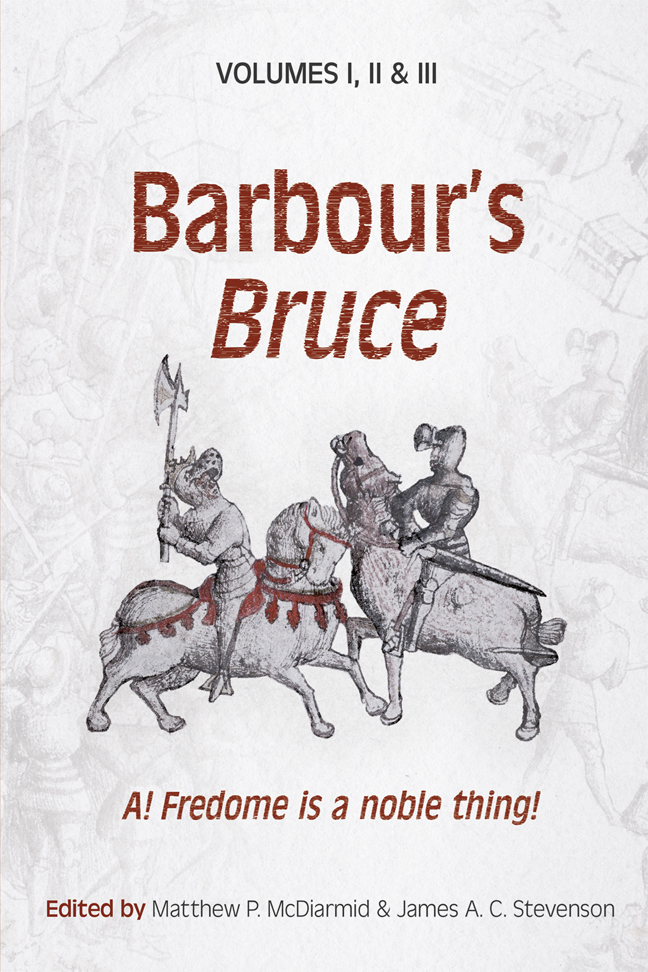General Introduction
Published online by Cambridge University Press: 28 December 2023
Summary
The poet's birth-year is unknown but an approximate dating can be given. His known death on 13 March 1395 supplies one term of the computation and the other, about 1325, is indicated by the earliest references. He first appears in the records as precentor at Dunkeld cathedral church between 18 May 1355, when his predecessor in that office, John Luce, was made bishop of the diocese, and 12 July 1356 when another was provided to the precentorship. His next appearance is in a safe-conduct of 13 August 1357 as archdeacon of Aberdeen, presumably receiving the appointment when its holder, Alexander of Kininmund, became bishop there December 1355). By canon law members of the inferior orders of clergy were supposed to have reached the age of twenty-five before being accepted by their bishop, though for various reasons of expediency there were exceptions to the rule. Judging by normal practice we should expect Barbour to have been about thirty years of age when he went to the very responsible archdeaconship.
Concerning his native region there can only be reasonable speculation. There is no record from his student days to specify his diocese, and assertions of an Aberdeen origin have been biased by ignorance of his Dunkeld employment, itself not necessarily his first. Since it is likely that he came from a landholding family however small the tenement, it is worth observing that in the scanty records of the late thirteenth and early fourteenth centuries only two such references to the north have been noticed, one to Aberdeen and one to Montrose, all the others being to land-owners in the south and south-west. Of these two have some interest because they can be connected with places and persons in the Bruce. One of them, ‘Aleyn le Barbur’ of the county of Ayr, is listed in Ragman Roll (1296) along with neighbours such as Reginald Crawford, whose death is lamented by the poet, Hugh Blair the father of the likewise lamented Bryce Blair, William of Cathcart the father of Barbour's informant Sir Alan, and Rauf Eglinton whose son Sir Hugh was both colleague and fellow poet. The other, Adam Barbour — who may be the person called both Adam and Alan in the Rolls (1329) — had lands from King Robert in areas known to the author of Brace.
- Type
- Chapter
- Information
- Barbour's BruceA Fredome is a noble thing!, pp. 1 - 52Publisher: Boydell & BrewerPrint publication year: 2023



